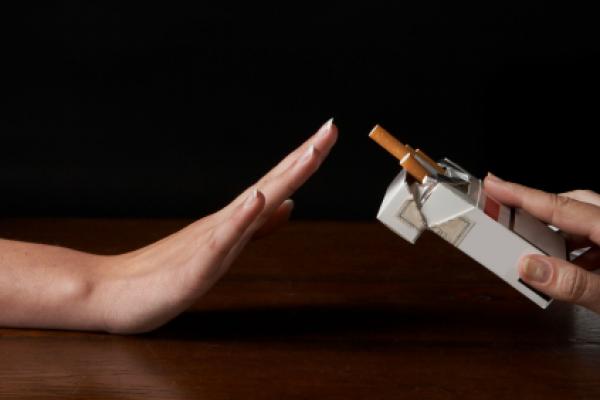Being around tobacco smoke is bad for you, even if it's someone else's smoke.
When someone smokes a cigarette, most of the smoke doesn't go into their lungs. It goes into the air, where anyone nearby can breathe it.
Smoking is banned in many public places. But many people are still exposed to secondhand smoke, especially children who live with parents who smoke. Even people who try to be careful about where they light up may not protect those around them.
Why Secondhand Smoke is More Dangerous
Second-hand smoke contains a lethal mix of more than 4,000 chemicals such as arsenic, hydrogen cyanide, ammonia and carbon monoxide. Two hundred of these chemicals have been identified as poisonous and can cause cancer.
Second-hand smoke is when you are exposed to the harms of tobacco being smoked near you. This can be from exhaled smoke or from a lit cigarette. Second-hand smoke is the leading environmental cause of death in this country. There is no safe level of exposure to second-hand smoke and those who are exposed may suffer from many of the same diseases as regular smokers, such as coronary heart disease, lung cancer, acute stroke, eye and nasal irritation and nasal sinus cancer.
Secondhand Smoke as Human Carcinogen
Secondhand smoke is classified as a “known human carcinogen” (cancer-causing agent) by the US Environmental Protection Agency (EPA), the US National Toxicology Program, and the International Agency for Research on Cancer (IARC – a branch of the World Health Organization).
Second hand Smoke has been linked to lung cancer. There is also some evidence suggesting it might be linked to lymphoma, leukemia, and brain tumors in children, and cancers of the larynx (voice box), pharynx (throat), nasal sinuses, brain, bladder, rectum, stomach, and breast in adults.
Secondhand Smoke and Children's Health
IARC reported in 2009 that parents who smoked before and during pregnancy were more likely to have a child with hepatoblastoma. This rare liver cancer is thought to start while the child is still in the uterus. Compared with non-smoking parents, the risk was about twice as high if only one parent smoked, but nearly 5 times higher when both parents smoked.
Children are our most valuable asset and are particularly vulnerable to second-hand smoke due to their smaller lungs and lower body weight. Children need to be protected from second-hand smoke as much as possible as it can cause:
- Middle ear infections (including glue ear/otitis media)
- Lower respiratory illnesses (including croup, bronchitis, bronchiolitis and pneumonia)
- The onset of asthma and worsening of asthmatic symptoms
- Reduced lung growth
- Sudden unexpected death in infancy (SUDI also known as SIDS or cot death)
- Meningococcal disease
- Child’s learning development and behaviour.
Exposure to second-hand smoke during pregnancy can reduce fetal growth and other complications.
How to Avoid Secondhand Smoke
It's simple: Avoid being around people who are smoking, and try to convince those around you who smoke to quit. Anyone who does smoke should do so outside, as far away from other people as possible.
Your home is probably the most important place to keep smoke-free, especially if you have children. Keeping kids (and adults) far away from smoke can help lower their chances of having respiratory infections, severe asthma, cancer, and many other serious conditions.
For more health info and promotions, please follow us on Facebook- Wellness Lab
 |
| Download Wellness Lab mobile apps now for more promotions |
If you like this article, you can share this to your friends and families , together we share the health information and the taste of a healthy life!
























